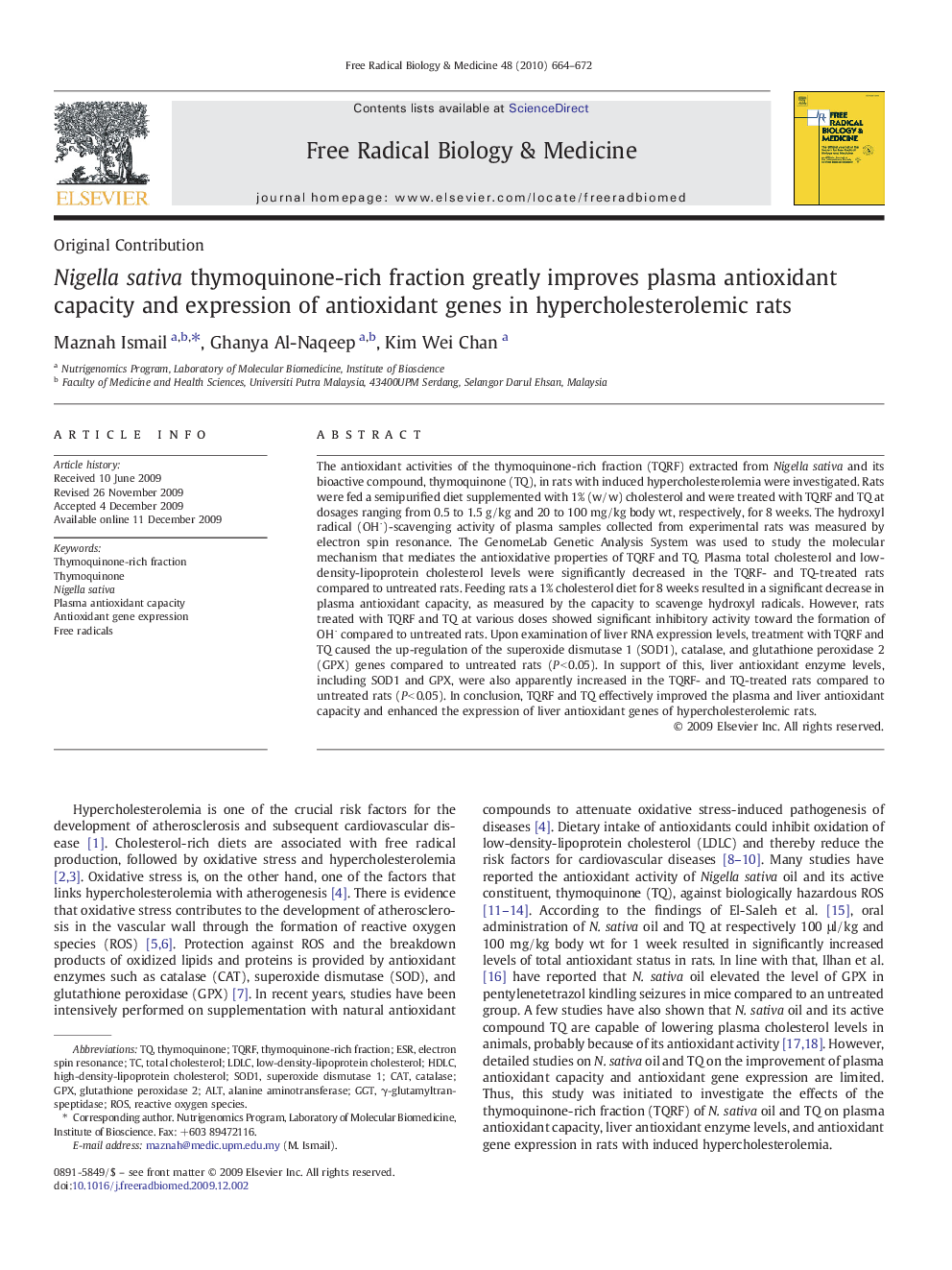| Article ID | Journal | Published Year | Pages | File Type |
|---|---|---|---|---|
| 1910008 | Free Radical Biology and Medicine | 2010 | 9 Pages |
Abstract
The antioxidant activities of the thymoquinone-rich fraction (TQRF) extracted from Nigella sativa and its bioactive compound, thymoquinone (TQ), in rats with induced hypercholesterolemia were investigated. Rats were fed a semipurified diet supplemented with 1% (w/w) cholesterol and were treated with TQRF and TQ at dosages ranging from 0.5 to 1.5 g/kg and 20 to 100 mg/kg body wt, respectively, for 8 weeks. The hydroxyl radical (OH·)-scavenging activity of plasma samples collected from experimental rats was measured by electron spin resonance. The GenomeLab Genetic Analysis System was used to study the molecular mechanism that mediates the antioxidative properties of TQRF and TQ. Plasma total cholesterol and low-density-lipoprotein cholesterol levels were significantly decreased in the TQRF- and TQ-treated rats compared to untreated rats. Feeding rats a 1% cholesterol diet for 8 weeks resulted in a significant decrease in plasma antioxidant capacity, as measured by the capacity to scavenge hydroxyl radicals. However, rats treated with TQRF and TQ at various doses showed significant inhibitory activity toward the formation of OH· compared to untreated rats. Upon examination of liver RNA expression levels, treatment with TQRF and TQ caused the up-regulation of the superoxide dismutase 1 (SOD1), catalase, and glutathione peroxidase 2 (GPX) genes compared to untreated rats (P < 0.05). In support of this, liver antioxidant enzyme levels, including SOD1 and GPX, were also apparently increased in the TQRF- and TQ-treated rats compared to untreated rats (P < 0.05). In conclusion, TQRF and TQ effectively improved the plasma and liver antioxidant capacity and enhanced the expression of liver antioxidant genes of hypercholesterolemic rats.
Keywords
GGTLDLcHDLCSOD1Nigella sativaALTGPXCATESRROSγ-glutamyltranspeptidaseAlanine aminotransferaseAntioxidant gene expressionThymoquinoneFree radicalsElectron spin resonancesuperoxide dismutase 1Plasma antioxidant capacityCatalaseHigh-density-lipoprotein cholesteroltotal cholesterolLow-Density-Lipoprotein CholesterolReactive oxygen species
Related Topics
Life Sciences
Biochemistry, Genetics and Molecular Biology
Ageing
Authors
Maznah Ismail, Ghanya Al-Naqeep, Kim Wei Chan,
